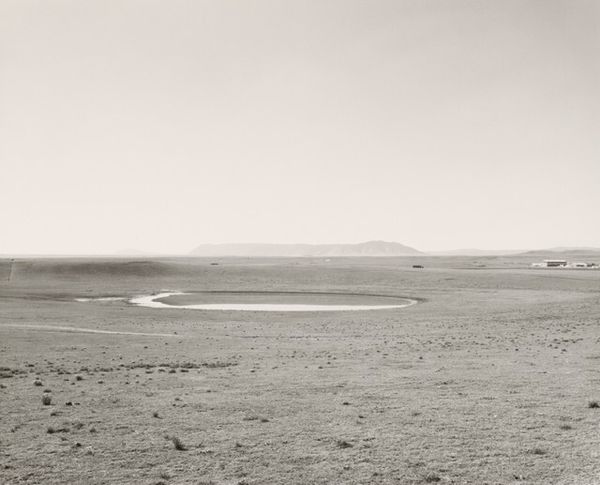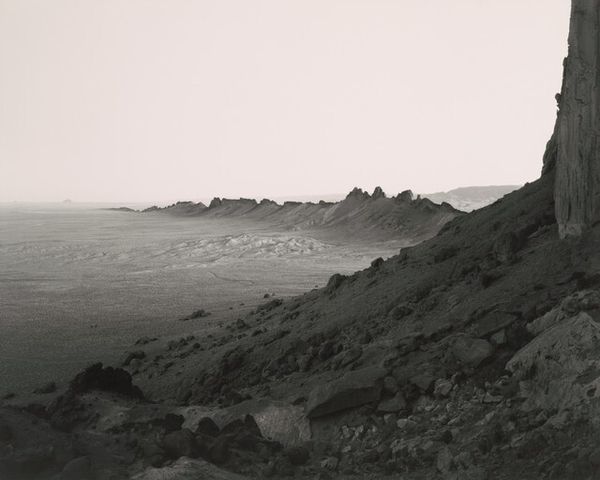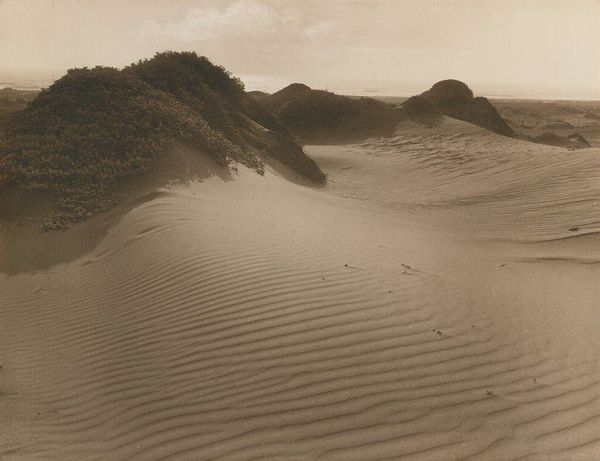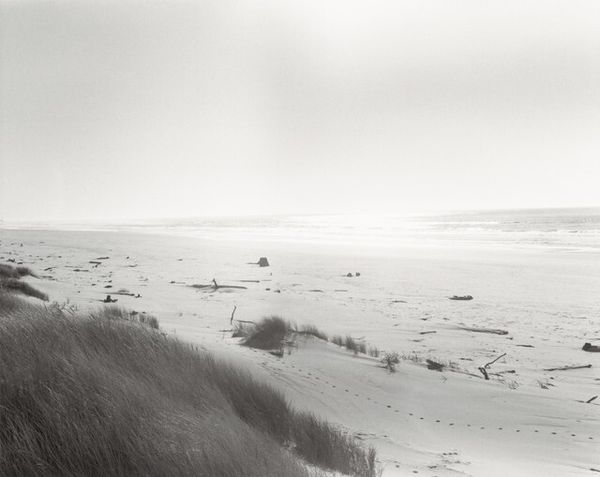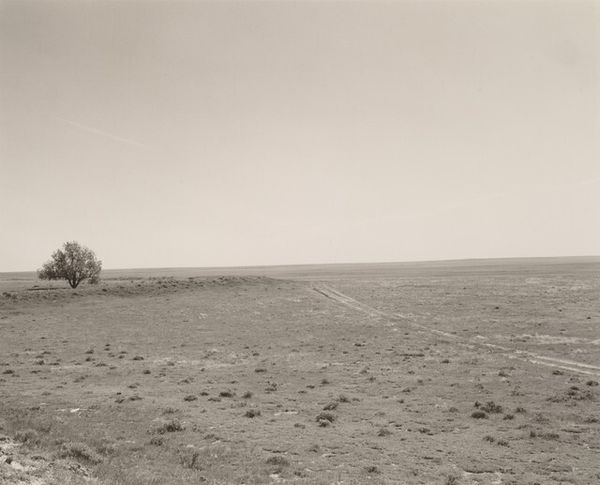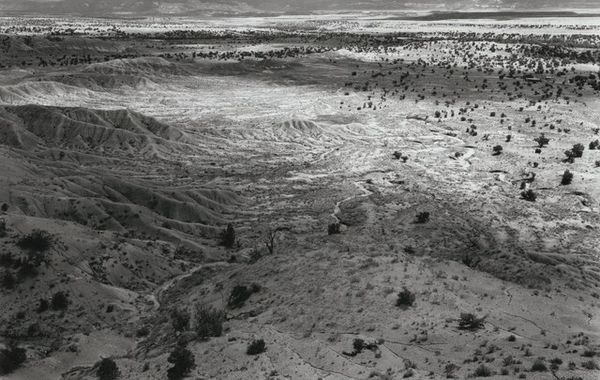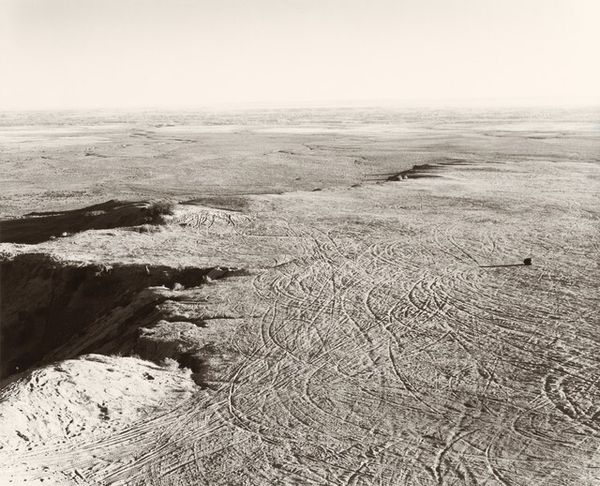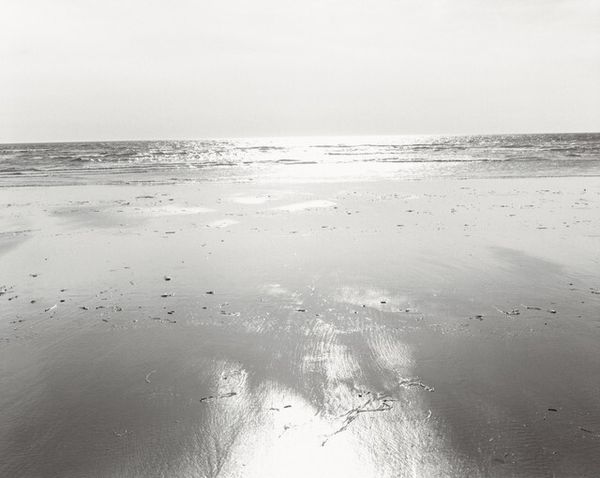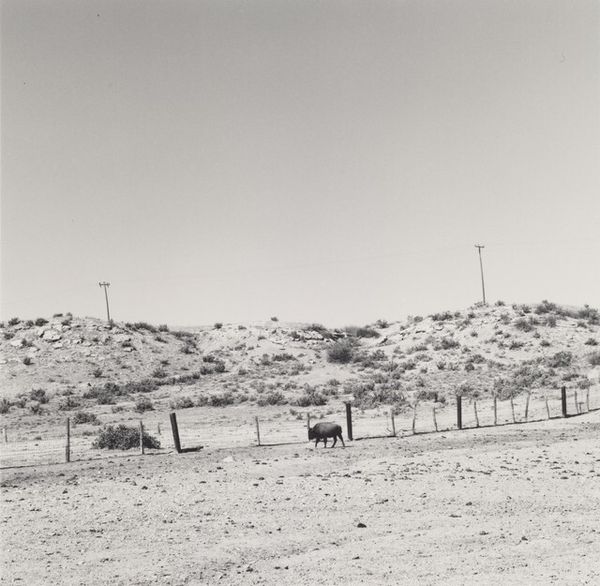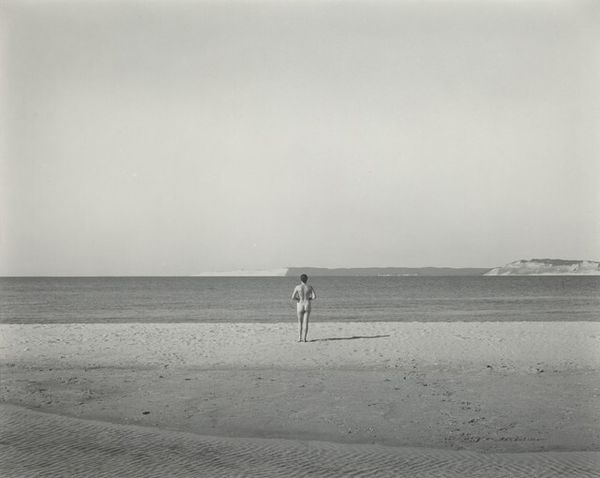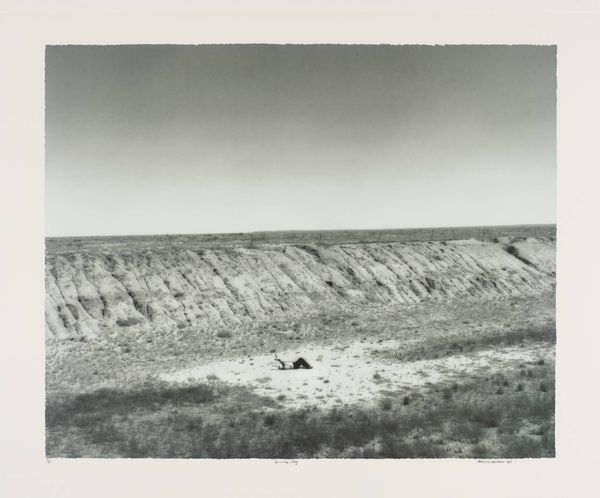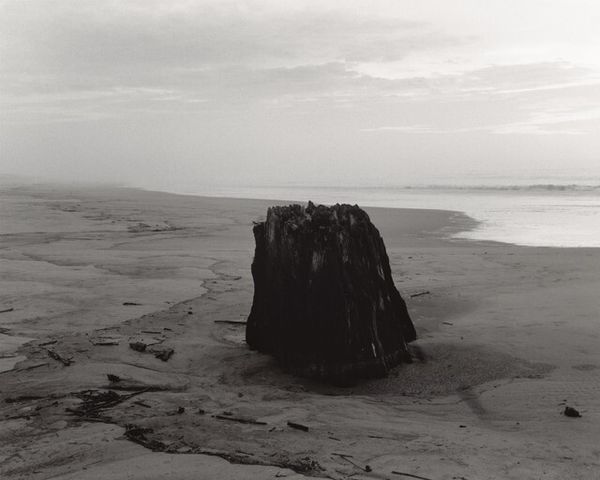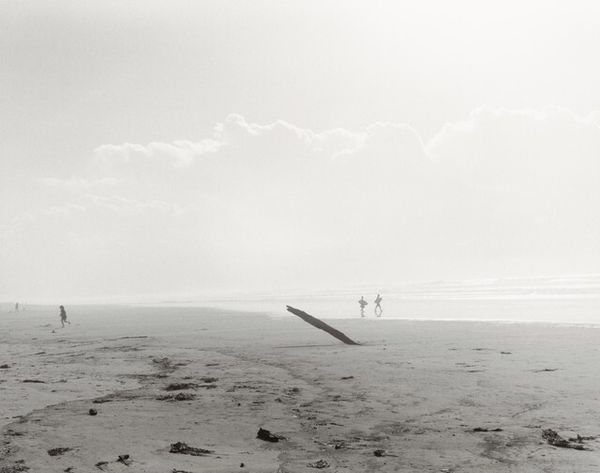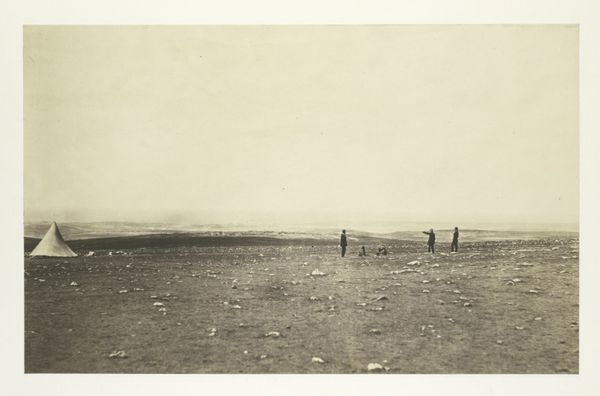
Dimensions: image: 19.4 x 24.4 cm (7 5/8 x 9 5/8 in.) sheet: 20.2 x 25.2 cm (7 15/16 x 9 15/16 in.)
Copyright: National Gallery of Art: CC0 1.0
Curator: Before us we have Harry Callahan’s gelatin silver print, “Indiana,” taken in 1948. The landscape is striking. Editor: It's certainly bleak. A wash of gray over almost everything, like looking into an old memory. The materiality feels rough, like sand or ash, creating this overwhelming sense of… displacement. Curator: Callahan was drawn to documenting the stark landscapes and urban scenes of post-war America, specifically during a period defined by shifts in identity, labor, and rapidly changing social landscapes. Editor: Interesting you mention that—the two almost industrial poles rising distantly from the horizon. There’s something alienating in their geometry, their imposition on the natural, almost organic sprawl of the dunes and lake. Were these a prominent feature in Indiana's industrial areas? Curator: They might very well point to the slow creep of industry, yes. But even Callahan's formalism bears examining. Photography provided unique access in bearing witness to marginalized people or in unveiling harsh class struggles in plain view, which at that time allowed an opportunity to destabilize traditional hierarchies and to demand visibility for ignored narratives. Editor: Absolutely. The stark monochrome also flattens the visual field, almost removing any sense of depth. This manipulation—or distillation—feels like a commentary on resource depletion; an emotional consequence embedded in the act of transforming landscapes. The silver gelatin process itself has such heavy reliance on materials—silver especially—the violence to nature and extraction to even *make* an image like this—is profound. Curator: The photograph, then, becomes a point of intervention. It asks us to confront the conditions of production, of seeing, and our own place within the world as knowing participants in ongoing consumption patterns. Editor: Right. It refuses simple observation. The textures, the industrial intrusion, all point to very direct considerations of extraction and labor—complicating our appreciation of this aesthetic. The work resonates as an example of photographic modernism. Curator: It definitely underscores our roles, then and now. It offers us a glimpse into Callahan's America, while holding up a mirror to our current anxieties surrounding capitalism, material usage, and questions of the representation. Editor: A harsh beauty, crafted to unsettle. To consider how such materials speak of land transformation—and social reformation—remains more vital than ever.
Comments
No comments
Be the first to comment and join the conversation on the ultimate creative platform.
